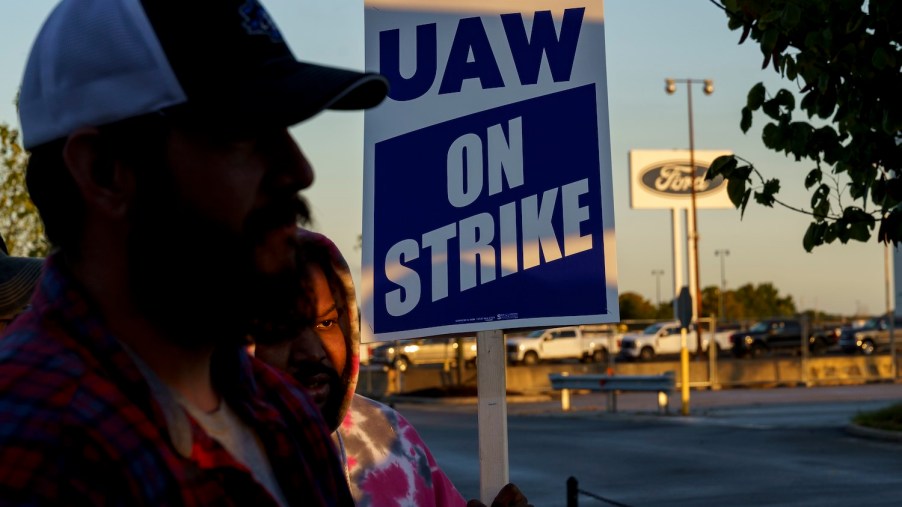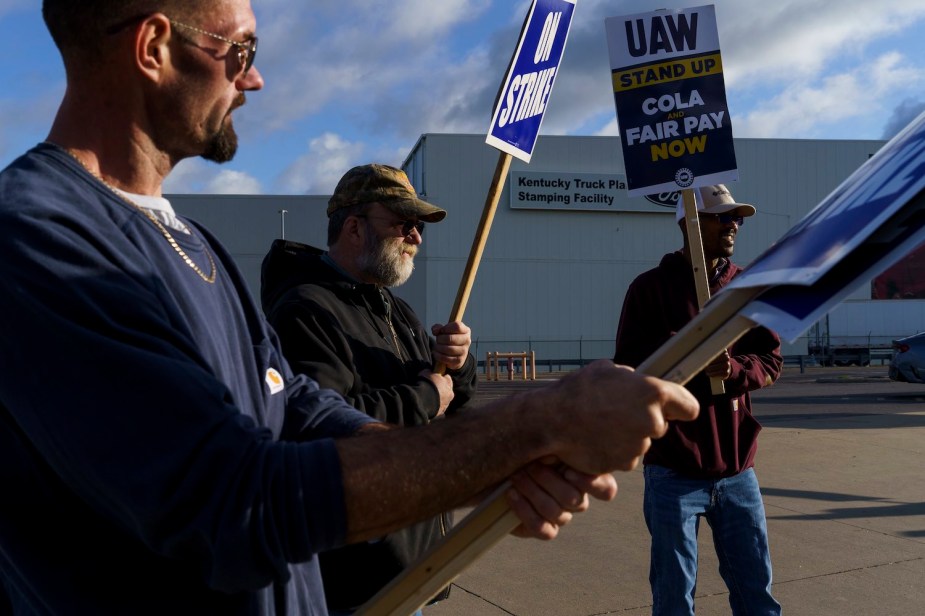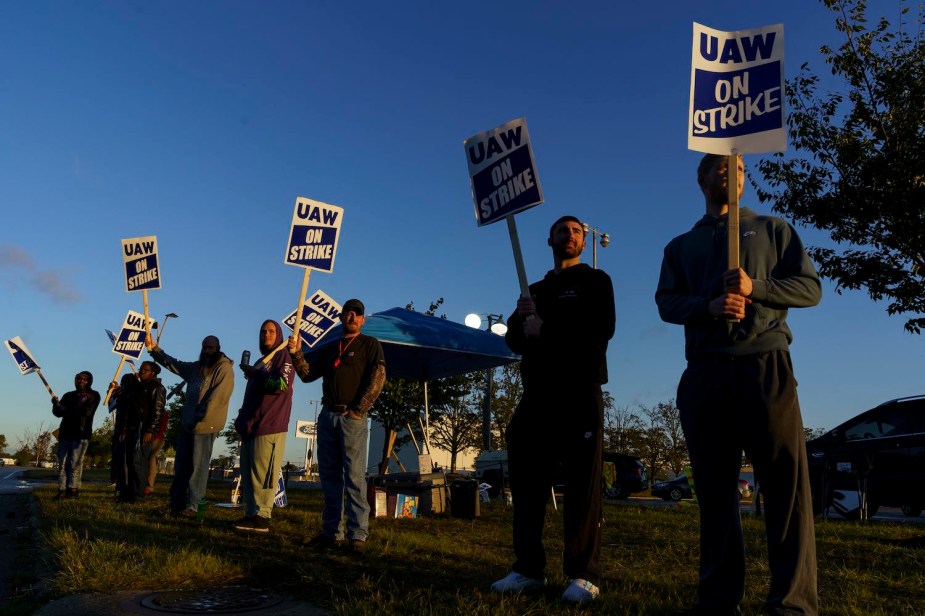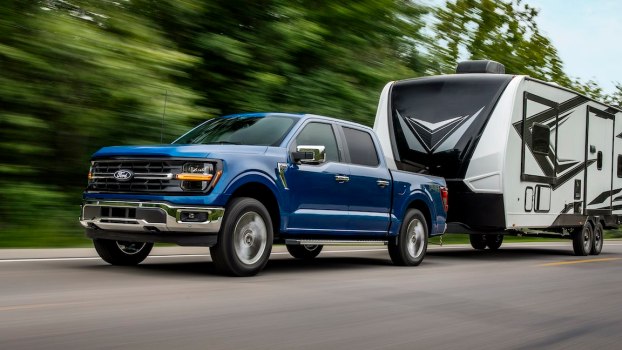
Ford Offers UAW a Deal: Here’s What It Means for Your Next Escape or F-150
Yup, it looks like the United Auto Workers’ Union and the Detroit Three will strike a deal. It’s different than any deal the UAW has been able to negotiate in the past for several major reasons. And Ford had to give up the most of any automaker. Here’s how this union strike could affect your next vehicle–and the US auto industry for generations.
We may get a Ford Escape EV built here in the USA

Ford has long been considering closing its Assembly plant in Louisville, Kentucky, which makes the Ford Escape and Lincoln Corsair crossovers. In a show of solidarity, the UAW strikers–mostly centered in Detroit–demanded Ford find a way to keep the Kentucky plant open. This should mean jobs for 3,200 Kentucky workers. But it might mean something else.
In this contract, Ford promised the Louisville plant would get a new EV. The automaker previously announced it plans to discontinue the Ford Escape. But its simplest path forward might be to continue the Escape/Corsair as its next EV. Could we get an electric Ford Escape because of the UAW?
Of course, there’s also a big chance that Ford still reboots with all-new EV nameplates but builds them in Louisville. Note that an hour east lies the Toyota plant in Georgetown, KY, and there’s a GM plant down in Bowling Green, KY, making Corvettes. Kentucky is home to a skilled automotive workforce. Hopefully, Ford’s decision proves lucrative for both the automaker and the workers there.
Next year’s Fords probably won’t be more expensive

There are two reasons you probably won’t see a huge MSRP bump in the wake of the latest UAW contract. First, labor accounts for a surprisingly small portion of a new car’s price (15% or less). Secondly, we just saw a huge bump in Ford’s MSRPs to offset supply chain issues.
The contract Ford offered the UAW includes a huge wage increase. In 2023, temporary workers at Ford plants still started at $16 an hour. Going forward, they will see $21 an hour. It used to take two years to go from temp to full-time. Now it will take nine months, and they can expect $42/hour within three years.
How much will these wage increases drive up the prices of your Ford? Not much. NBC estimates that labor costs might account for up to 15% of a new vehicle’s MSRP. Obviously, a vehicle that costs more because of materials (such as an F-150 or Expedition) is less affected, as is a vehicle that costs more because of R&D (think EVs such as the Mustang Mach-E).
Finally, Ford just did a big round of price hikes on its vehicles. For example, the Ford F-150’s price jumped $8k in two years. These increases were because of global supply chain shortages (a much higher factor in MSRP than labor costs). But Ford executives know that if MSRPs grow faster than inflation, they’ll drive buyers to the used market. So MSRPs will likely flat-line for at least a few years.
In the past, Ford has offered stripped-down trims without features such as electric windows to stick to a target MSRP. We’ll have to wait and see how future base-level Fords look. A Ford Escape EV with crank-up windows may seem like an odd anachronism. But hey, if this ensures affordable transportation for motorists and fair wages for workers, it may be worth it.
The UAW can ensure more future EVs are built in the USA

As the UAW strikes slowed production and President Biden made the historic move of siding with the workers, the Detroit Three threatened to scale back EV production. Obviously, if scaling back EV production means scaling back the advanced training that will future-proof the UAW workforce, it’s not in the union’s best interest.
Hopefully, the UAW will push the automakers to forge ahead with EV production in the US. And it now has the power to accomplish precisely that.
The most significant departure from past contracts is that the entire UAW can now strike over the closure of individual plants. This gives the UAW President, Shawn Fain, an unprecedented level of power. Let’s hope that during the electrification revolution, he can use this power to transform the USA into the EV-producing capital of the world, and build his UAW into the most highly-trained automaking workforce in history. Ford bringing an EV to Louisville is a promising step in the right direction.
Even if the Detroit Three refuse to play ball, Shawn Fain may be forward-thinking enough to guarantee the USA’s relevance in the looming revolution. Unions in other industries justify the high wages they demand by taking on some of the training of their workers. If the UAW trained its members to assemble the next generation of electric–and even autonomous–vehicles, it could revolutionize the industry.
With Tesla pouring resources into humanoid robots–likely to avoid dealing with such strikes–the tactics Fain and the UAW choose may have a significant impact on human history.
Next, find out whether Ram created the Detroit of Mexico, or learn more about Ford and UAW’s deal in the video below:





